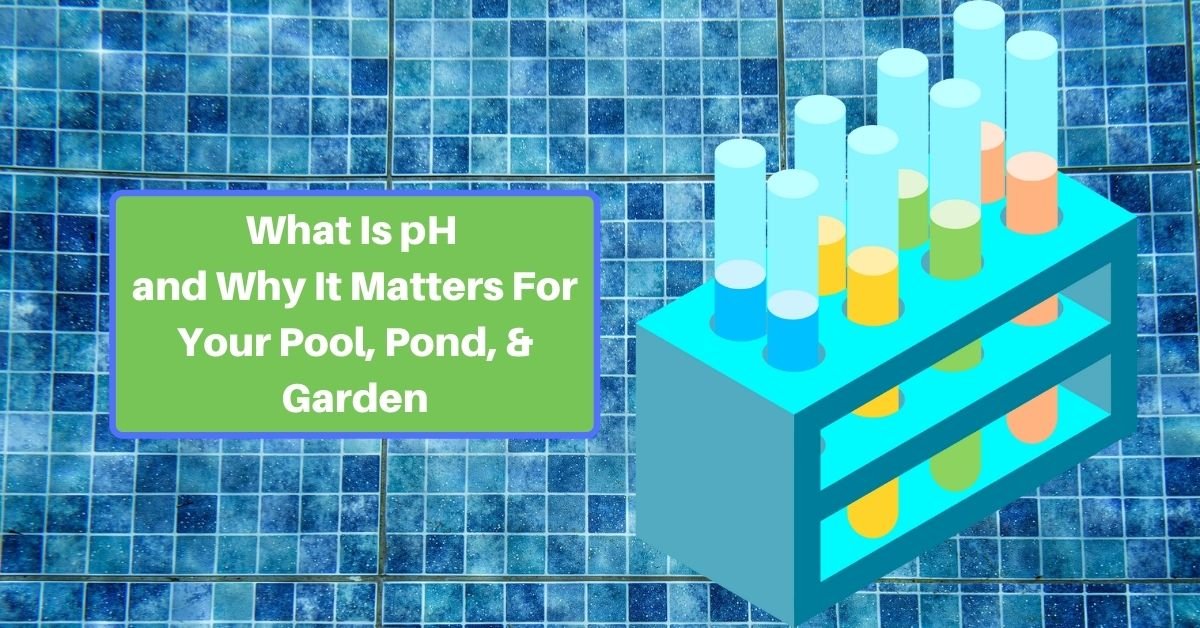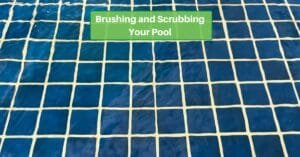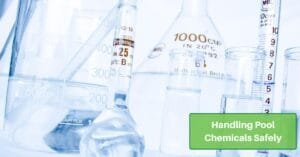It’s the acid test and the base for treating your soil, pool, and pond. And we’re going to stop the puns right now because those are so bad. But it’s a good idea to understand pH if you want to enjoy your garden and water features to the max!
Other articles on our site talk more about reaching the correct pH levels in each of these three areas. But we know you’re asking yourself what pH is all about. So in this entry, we’ll talk about what it measures and give a brief introduction into how it affects water and soil – and everything that goes into them.
What Is pH?
pH measures the levels of active hydrogen in a substance. If you remember any chemistry, you know that the letter H is the chemical symbol for this element. The p stands for “potential” or “power”.
The pH scale was first established in 1908 by Søren Peder Lauritz Sørensen, a chemist from Denmark. The only significant changes to Sørensen’s scale dates to 1926, so this system has worked well for nearly 100 years!
The scale goes from 0 to 14. A pH of 7 is neutral. Sometimes we think of tap water falling right at the neutral point, but it can range depending on your city or the well it comes from.
Acids
Numbers lower than 7 identify acidic substances. The more acidic, the lower the number. If the number is over 7, it’s called a base or an alkaline. Lower numbers are considered a high pH. That is, acids have a high pH level.
Now, you might think we want to avoid acids at all costs. But most tastes that humans enjoy are acidic! Sure, many chemicals are so acidic that they can burn right through metal. But these have pH levels at the bottom of the scale, around 0 or 1.
Milk, for instance, has a pH of around 6. Coffee (black) registers about 5. Think that sounds extreme? Lemon juice has a pH between 1 and 2! Soda is slightly less acidic, ranging from 2.5 to 3.5 on the scale.
Battery acid is on the bottom rung, around 0.
Bases
On the other half of the scale, we can find a lot of things we don’t like to ingest. These items have a low pH – anything above 7 up to the end of the scale at 14.
Seawater, for instance, tests around 8 and baking soda at 9.5.
From there, things get nasty fast. Ammonia is about 10.5, bleach about 13.5, and liquid drain cleaner at 14!
As you can see, both ends of the scale are dangerous, but there’s a decent range of tolerance. Still, our taste buds don’t like large quantities of acids, and hardly like bases at all.
Why It Matters
It’s not only our taste buds that have specific preferences. All living and nonliving things can support certain pH levels. Organic and inorganic substances alike will hold up well or rapidly fall apart depending on the pH. Our skin can be affected, but so can grass, plants, trees, and creatures – like our beloved koi fish or the hated algae that can develop in the swimming pool.
The pH level of water and soil changes over time. Rain is one factor. The nutrients that plants use alter soil chemistry. Fish waste and decomposing food affect water chemistry. And so do leaves, fertilizer, and anything else that mixes into soil or water.
For Your Pool
If water varies outside the range of about pH 6.5 to 7.5, it can leave you feeling uncomfortable. It can also make the water unhealthy and even damage the pool itself!
A pH off neutral can lead to irritated skin and itchy eyes.
It can also lead to bacterial or algal blossoms. Both of these can become hazardous to the health of swimmers.
An off-balance pH can even damage the tiles, liner, ladder, and other parts of the pool
That’s why you should regularly test the pool pH and treat the water appropriately.
For Your Pond
The same concerns with your pool also play a role in your ponds. If you have fish, it’s essential to pay attention to the water chemistry!
Most outdoor ponds house koi and these fish have a fairly wide pH tolerance. They can thrive in a range of 6.5 to 8.5. But all kinds of things affect water chemistry: dead plants, insects, and amphibians that may end up in the water; fish droppings, rain, and runoff are just a few. The chemical balance changes quickly. So proper care and testing are essential for all ponds, especially koi ponds.
With ponds that are simply for show and don’t house fish, a pH imbalance can still affect the plants and wildlife that make their home there or visit for a drink.
For Your Soil
It’s not just water’s pH that you have to worry about. Soil pH is important for the plants that grow in it. And those plants also affect and change the pH as they absorb nutrients from the soil.
Some plants thrive in slightly alkaline soil; others do better in more acidic soil. But if you want them to do well, you’ll either have to adjust the plants or treat the soil
If your soil is too acidic, adding treatments with lime can help balance it. On the other hand, if your plants want something more acidic, sulfur or aluminum sulfate are common chemicals to lower the pH.
Be sure to test your soil at least once a year in the fall so you can add the best fertilizers and treatments.
Conclusion
You might have thought high school chemistry was useless, but some of it comes in handy when taking care of your yard! The pH level is vital in keeping your pool, pond, and soil in prime conditions. With regular tests and necessary treatments, you can help keep them in peak shape.









